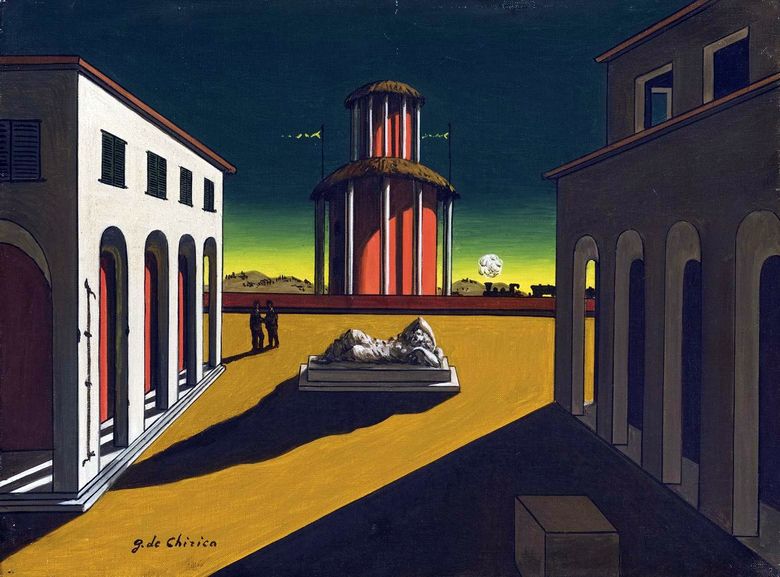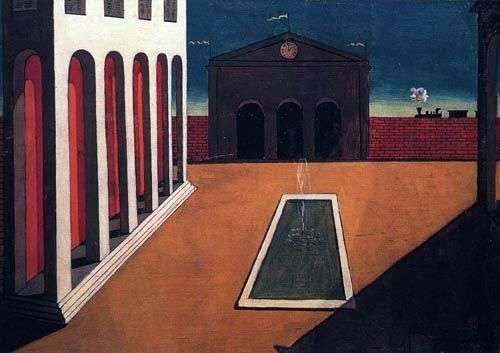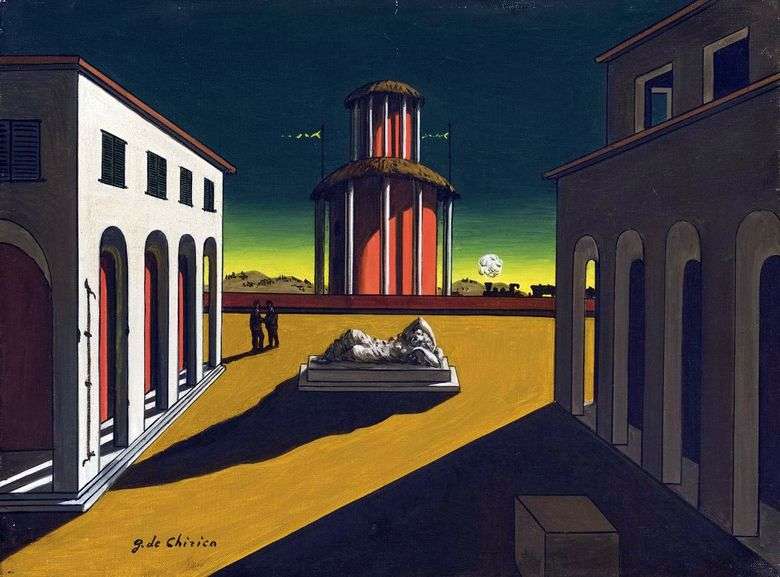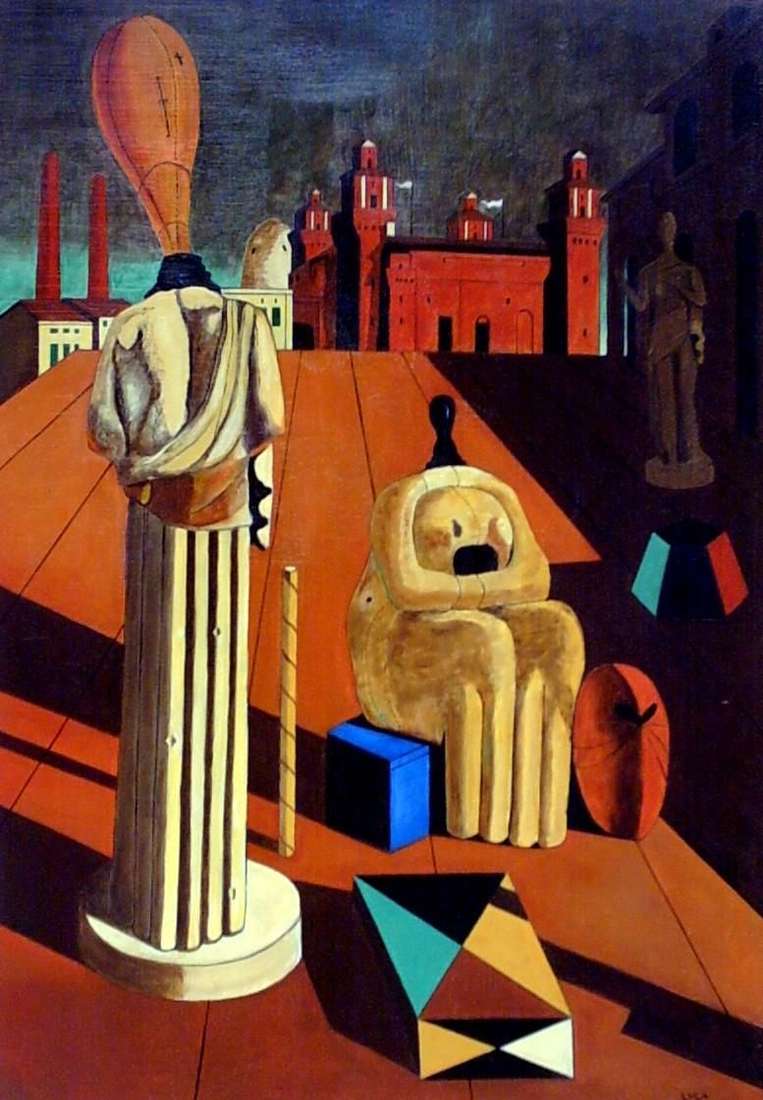
In 1912-1913, de Chirico created several canvases depicting typical Italian city squares. During this period, de Chirico tries to philosophically comprehend the surrounding reality, it is occupied by riddles, mysteries, mysticism.
The painter refers to the theme of antiquity, to illustrate the provisions of Nietzsche’s philosophy. In the desert areas, the master often depicts the statue of Ariadne – a symbol of sadness and melancholy.
Strictly following the European pictorial tradition, de Chirico at the same time brings to his canvases new, personal elements, as well as only his inherent formal solutions. On the canvases, the statue of Ariadne is surrounded by deserted galleries. The motif of the arch, repeatedly repeated and passing from painting to painting, is as inseparable from the system of symbols de Chirico, as well as the image of the tower.
The train with a small train, over which the smoke flows, hints at the plot collision of the myth of Ariadne. Place d’Italie: Melancholia – Giorgio de Chirico In the painting “Place d’Italie: Melancholia” the composition is built with the help of shadows from the architectural elements of the statue of Ariadne. And the background, saturated in tone, is again emphasized by the presence of the train. This image symbolizes Thesea, to whom Ariadne, in love, helped to get out of the Labyrinth with the help of a magic ball… Ariadne is inconsolable in her longing for the beloved who has irretrievably left her.
The horizontal strip of outgoing daylight exacerbates the sad mood of the composition. Place d’Italia – Giorgio de Chirico “Place d’Italia”, created a year later and kept in the Toronto Art Gallery, differs from the previous work in a cheerful, light color. Silent statue of Ariadne – de Chirico In the same period of the painting “Silent Statue of Ariadne”, a play of light and shadow is actively used… The artist refers to new pictorial methods. Pointed corners, some schematic of the statue suggest the influence of Picasso. The composition itself is also new and unusual – the first plan is darkened, as if deliberately, artificially imposed on the background. The look is attracted by this shadow, and then it seems to slip into the depths of the picture to the bright light.
 Carrés italiens dans les peintures – Giorgio de Chirico
Carrés italiens dans les peintures – Giorgio de Chirico Enjoying poetry by Giorgio de Chirico
Enjoying poetry by Giorgio de Chirico Cuadrados italianos en las pinturas – Giorgio de Chirico
Cuadrados italianos en las pinturas – Giorgio de Chirico The Prodigal Son by Giorgio de Chirico
The Prodigal Son by Giorgio de Chirico Destruction of the Muses by Giorgio de Chirico
Destruction of the Muses by Giorgio de Chirico Tower by Giorgio de Chirico
Tower by Giorgio de Chirico Walk of the philosopher by Giorgio de Chirico
Walk of the philosopher by Giorgio de Chirico Red Tower by Giorgio de Chirico
Red Tower by Giorgio de Chirico